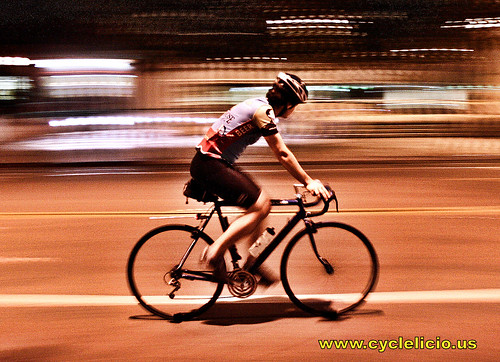I’m sure somebody will find this interesting. The Dutch Institute for Road Safety Research (‘Stichting Wetenschappelijk Onderzoek Verkeersveiligheid’ or SWOV) say they’ve never studied the risk of cycling in the dark versus daylight until recently. They announced their results with the boldly groundbreaking headline: “Cycling in the dark more dangerous than in daylight.”
Personally, I feel a little ripped off. We already know from US NHTSA data that cycling at night is more dangerous than cycling during the day, even if exposure data is missing. The Dutch news release, however, coyly hints in the introductory paragaph that their research would show how much bicycle lighting changes the equation for night cyclists. Are cyclists with lights safer than than bike ninjas riding in the dark?
After notes on the study design, the increased risk of cycling in the dark (14% to 17% of injury crashes occur at night, while only 10% of trips are made during those hours), and discussion on age groups and alcohol use, which in turn brings up the question: Is it really darkness that increases danger, or is it because drivers and cyclists both are more apt to be drunk when driving / cycling at 2 AM?
I’m still waiting in anticipation for the data on bicycle lights and safety when I reach the final paragraph:
The relation between using bicycle lights (and its quality) and the risk of cycling in dusk and dark has not been investigated in this study. Indeed, this is hard to investigate because it is not known whether or not cyclists who were involved in a crash had working lights on their bicycle.
Boo!

Another case of missing data!
Did they get taxpayer money for that nugget of wisdom?
I believe it’s a government agency, do presumably yes.
Sent from my Googaw
Wow, by your description this sounds like an incredibly weak and pointless study. there is such a thing as multivariate analysis and controlling for confounding variables! Sigh, I hate bad science.
There’s a perfectly natural, albeit technical, explanation for these results. As the Earth rotates around its axis, it periodically turns whatever point you stand on away from the Sun. This causes a diminution of light entering our atmosphere, and it’s this reduction in photons that’s likely responsible for increased crashes.